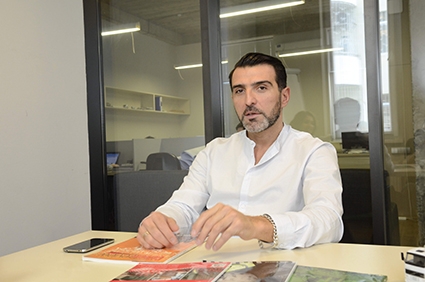LafargeHolcim and Georgian Company to Develop Concrete Market
After the cement project, that involves a construction of Cement grinding station in Poti Lafarge-Holcim and Leader Cement’s cooperation format will expand. It will become bigger and will also include a ready-mix direction.
LafargeHolcim was created in 2015 with the merger of two leaders in construction materials sector from French Lafarge and Swiss Holcim. The company is represented in 90 countries and is a leading player in cement, concrete, and aggregate business. The company has 115,000 employees. The group owns more than 2,500 plants around the world including over 1600 in ready mix, over 180 in cement and 70 grinding plants.
R&D is the cornerstone of innovation at LafargeHolcim. The Swiss-based Group combines best-in-class technical expertise, the latest equipment, and the most noteworthy international research partners to offer an R&D capacity that is unmatched in our sector. The company Leader Cement is cooperating with LafargeHolcim to finish the construction of a cement grinding plant in Poti that will produce 250 000 thousand tons of cement annually in the initial stage.
The Leader Cement team was invited to France in order to get acquainted with the up to date achievements of LafargeHolcim in cement and concrete production. During the visit representatives of Leader Cement visited LafargeHolcim’s state-of-the-art Research Center in Lyon.
Q: What is the current status of construction of the Poti cement plant and when will it be finished?
A: The construction of the plant began in 2014. The construction process will be finished at the end of this year. After testing period and PAC certification, the plant will be put to use at full capacity, producing 250-300k tons of cement per year. Our company has a strategic development plan that is made up of several phases. If demand for cement increases on the market, we will be able to increase the capacity. The possibility of such an upgrade is incorporated in our plant design.
Q: The construction of such a large cement plant and its successful operation is associated with many risks and challenges.
A: Before the implementation of the project, a feasibility study was carried out. The study showed that the western Georgian market was largely served by imported Turkish cement. There was still enough space for one bigger player. We hastened to decide as soon as possible because we were afraid that another foreign company would be keen to enter Georgian market. If that happened, there would not be any place on the saturated market, and we would have lost the opportunity. The implementation of several large industrial and infrastructure projects, including large- scale plants and a new port in Western Georgia, was a further incentive for us. We aim to fully supply the companies and provide them with a diversified product range. The development of infrastructure creates some challenges. We will fully address this problem with our tailor-made products including slag cement that is aimed at big HPP’s.
Q: How protected are eco norms in your plant? Cement production is a heavy industry which means that it has problems with pollution…
A: In this regard, our plant will be among the best in the region. The plant will be equipped with 11 dust collection filters to ensure air purity of up to d” 30mg/Nm3 that beats air quality standards allowed under Georgian legislation. Leader Cement pays special attention to eco norms. Our aim is to produce high-quality cement without adversely affecting the environment.
Q: You just returned from France where you visited the research center of LafargeHolcim.
A: The research center of LafargeHolcim is quite impressive. With an annual budget 112 Million Euro its 223 engineers and technicians seek to understand physical and chemical mechanisms and elaborate new technologies. The 15,000 mІ site boasts state-of-the-art laboratories, pilot workshops and technology buildings for large-scale testing. As the new leader of the building materials industry, LafargeHolcim has leveraged its high-level research capabilities and experienced industrial know-how to develop the best range of multi-purpose concrete products and solutions on the market.
Q: How would you assess your visit to France and what are your plans for future?
A: During our visit, we met with the representatives of LafargeHolcim top management. We have a long-term development plan that consists of several stages. Therefore, it was planned that after this cement project our cooperation format will expand. It will become bigger and will include also a ready-mix direction. First a plant we will be installed in Tbilisi, then gradually we will reach out to the whole of Georgia. In Western Georgia we will have good synergy with our cement plant.
Q: What type of concrete will you offer local consumers?
A: After preparation works we will begin the implementation of a ready-mix production project in Tbilisi that will be equipped according to LafargeHolcim standards and will be unique to this particular region. According to our plan, after Tbilisi our project will be implemented also in other cities.
Our aim is to introduce European standards on the market. We saw that there is a demand also for special concretes. So we have decided that it is time we provide such innovative products to Georgian builders that will enable them to curb all existing challenges.
With the help of the most advanced R&D facilities worldwide, LafargeHolcim has developed the most innovative range of ready-mix, prefabricated concrete solutions and services. They are designed to support buildings and infrastructure construction players in meeting their challenges: CO2 footprint reduction and energy efficiency of buildings, costs and speed of construction and worksite productivity.
Q: What can you offer your customers?
A: We will offer stable service, timely deliveries and solutions tailored to individual needs. Our production is designed for modern constructions. That is why we will offer architects such concrete products that will enable them to create visually appealing buildings. This will help them to fulfill their ideas and work with such construction materials that will improve the architectural and visual appearance of the buildings.











